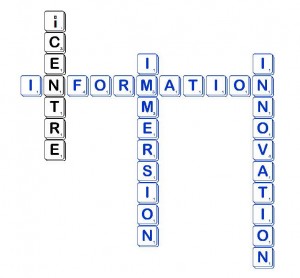 One of the resources that I learned about at the 19th Treasure Mountain Research Retreat “The Learner in the Learning Commons” was a video: “Connected Learning: Hands-On, Learner-Focused, Life-Long.” The idea of helping learners learn how to learn, to be flexible and adaptable, to address real-world problems made a strong connection for me with the engagements school librarians and classroom teachers can design with an inquiry learning model.
One of the resources that I learned about at the 19th Treasure Mountain Research Retreat “The Learner in the Learning Commons” was a video: “Connected Learning: Hands-On, Learner-Focused, Life-Long.” The idea of helping learners learn how to learn, to be flexible and adaptable, to address real-world problems made a strong connection for me with the engagements school librarians and classroom teachers can design with an inquiry learning model.
In the video, members of the Digital Media and Learning Research Hub (DML Research Hub) speak eloquently about how educators are asking the wrong question. Rather than asking “what do we want students to learn?” we could/should be asking “what experience do we want students to have?” (Connie Yowell, Director of Education, MacArthur Foundation).
For me, Dr. Yowell’s question is the essential question around which inquiry learning educators/facilitators develop student learning engagements. In an inquiry framework, outcomes are not the “facts” noted in the standards, but the processes that are also indicated in the standards such as developing a research plan, asking meaningful questions, identifying resources, and so on. These transferrable standards encompass the very processes that lead learners to active engagement with the ultimate goal of learning how to learn.
As inquiry guides, educators begin by motivating students and immersing them in content before students pose authentic and personally meaningful questions. Inquiry educators help learners identify resources, including mentors who can support their learning, sift and sort through information, construct and present new knowledge, and reflect on their learning process throughout the experience.
As long as we have a place called “school” with adults called “educators” who guide students’ learning, it’s my opinion that we must address the learning needs of educators. For me, our challenge in education is to take action to improve the practices of the “Adult Learners in the Learning Commons: The Elephant in the Room.” (Hence I published a paper with that title in the Treasure Mountain Research Retreat Proceedings.)
As Dr. Hay notes and I concur, school librarians are perfectly positioned to be facilitators of adult learning (while they themselves improve their own practices in the process). This culture of collaboration is essential for more engaged and meaningful student learning as well as for improving instructional practices and ensuring the sustainability of the school librarian profession.
Note: The DML Research Hub is concerned with an “equitable, participatory, and effective ecosystem of learning keyed to the digital and networked era. We are a collective of researchers, practitioners, and policyshifters analyzing the impact of the Internet and digital media on education, politics, and youth culture. The hub is part of the University of California’s systemwide Humanities Research Institute and is supported by the MacArthur Foundation” (quoted from their Web site).
To stimulate your thinking about the possibilities for education transformation, I recommend all of the videos found on the DML Research Hub Vimeo channel.
References
Askew, Nic. 2012. Connected Learning: Hands-On, Learner-Focused, Life-Long. Vimeo video, Posted by DML Research Hub. https://vimeo.com/37639766
Elephant image accessed from Microsoft Clipart





